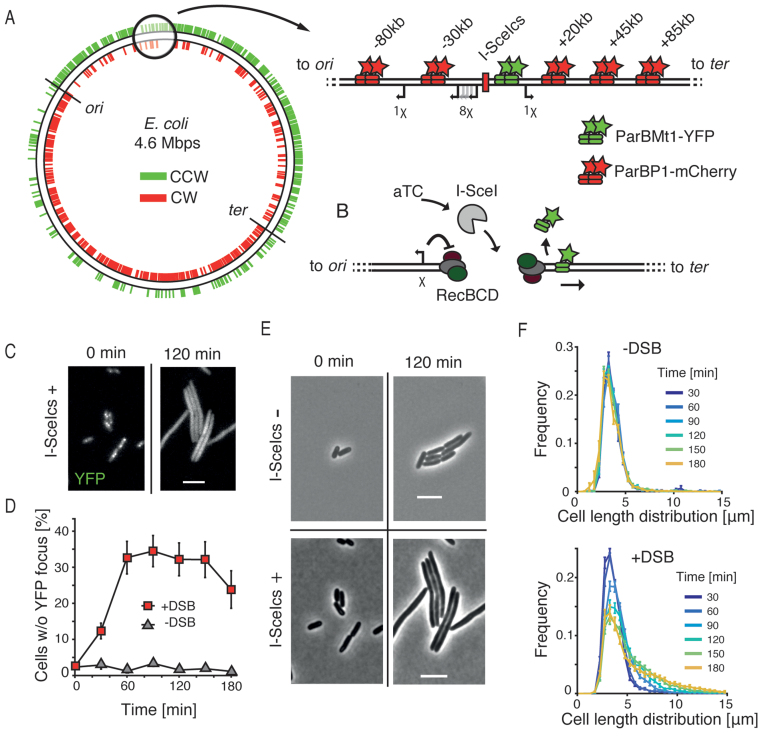Figure 1.
Double-stranded DNA break processing in Escherichia coli. (A) Schematic showing the asymmetric distribution of χ sites plotted on a circular representation of the E. coli chromosome. Sites oriented to activate RecBCD translocating in counterclockwise direction are shown in green; and those in clockwise direction shown in red. Positions of oriC and the terminus region are indicated. Zoom shows the region into which the I-SceI cut site (I-SceIcs) was integrated. Green stars indicate a position of parSPMT1 to which ParBMT1-YFP binds, red stars show the position of parSP1 to which ParBP1-mCherry binds. Distances from the I-SceIcs are shown on top; directions toward the terminus are denoted with a ‘+’ sign; directions toward the origin of replication are denoted with a ‘−’ sign. Arrows show positions of chromosomal χ sites that are oriented to activate RecBCD during translocation from the I-SceIcs position. (B) Schematic representing the experimental procedure. aTC is inducing the expression of I-SceI (gray) from the aTC-inducible promoter. I-SceI creates the site-specific DSB that is recognized and processed by RecBCD complexes. RecBCD end resection is controlled by a correctly oriented χ site (shown as an arrow on left). Translocation of RecBCD and degradation of parS sites results in displacement of the fluorescent ParB proteins. (C) Bacterial cells carrying the chromosomal I-SceIcs and expressing the I-SceI enzyme shown in the YFP channel. Scale bar is 5 μm. (D) Percentage of cells in the population that lost the YFP focus after induction of DSBs (red squares, mean ± SEM, n = 15), and results for the control, a non-induced culture (gray triangles, mean ± SEM, n = 4). (E) Effects of I-SceI expression on cell length in bacteria without the I-SceIcs (top) or with the I-SceIcs (top) sequence on the chromosome. Scale bar is 5 μm. (F) Distribution of cells sizes in time in the population in which DSBs were not induced (top, n = 4) or induced (bottom, n = 15).

